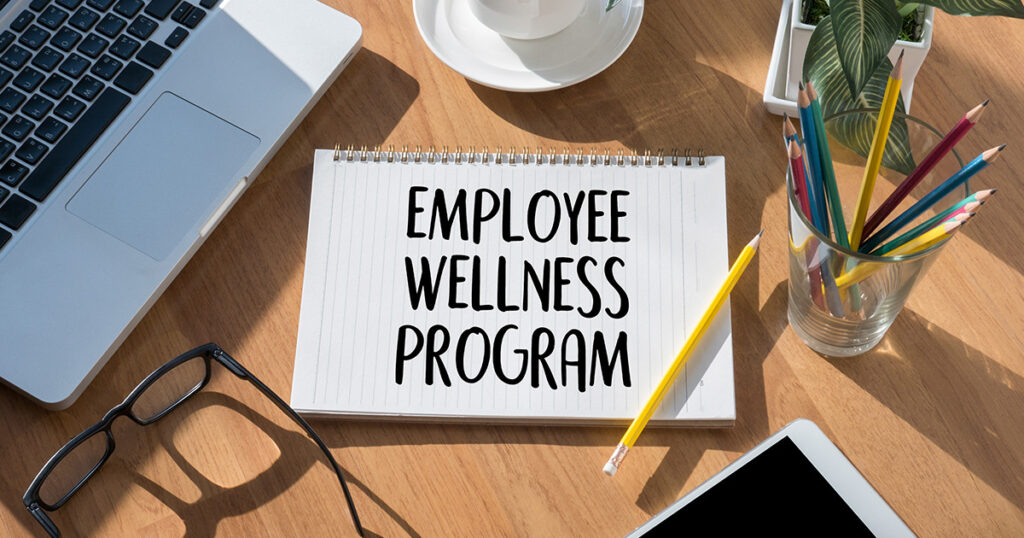Promoting physical activity has huge benefits for employees’ health. It reduces the risk of mental health problems and physical issues that arise due to lack of mobility, like obesity, type 2 diabetes, cardiovascular disease, and posture-related symptoms like lower back pain. Addressing these issues benefits employers too.
A physically inactive and unhealthy workforce can lead to a loss of productivity, staff absenteeism, and ultimately an increased hidden cost for employers.
Research shows that encouraging physical activity in the workplace can:
- Encourage a more positive work atmosphere, which leads to better communication
- Make the workplace and work more enjoyable, according to employees
- Increase employee productivity by improving their concentration and mental alertness
- Prevent or aid employees in managing stress, anxiety, as well as lower back pain
- Reduce staff absences and staff turnover
- Boost employee morale and wellbeing
- Enhance the public image of the company
Any organization can implement measures to promote physical activity in the workplace, no matter how large or small. With so many perks, it’s a worthwhile investment. But it can be difficult to know where to start, so we’ve come up with a few ideas.
How to Encourage Physical Activity in the Workplace?
Let’s address a common misconception: a workplace-promoting activity does not need to invest in a workplace gym. This idea is restrictive. There are many other ways to encourage people to move to work without the need for expensive facilities.
Often, small changes are best. They’re easier to implement, and people are more likely to stick to them. Of course, consider how your intervention could impact equality in your workplace since not all employees may be able to participate (for example, shift workers or people with disabilities may be excluded).
Some of these ideas can appear idealistic, but it’s all about implementation and using creativity to find a way that works best for your team.
1. Get moving on lunch breaks.
Many of us habitually eat lunch at our desks while replying to emails. This isn’t good. Even the most efficient employees need at least one short break in a workday. Getting a move on during lunch break also helps address presenteeism.
Presenteeism is the act of being at work without being productive. You might think you’re saving time by eating your lunch at your desk, but if you’ve been at your desk all day, you’re likely to be less productive. Frequent breaks, particularly those that are relaxing or physically active, can help to keep you focused.
Remind employees to put their health first and take a break when they need it. Cultivate a new mindset. Lunch breaks aren’t just a nice-to-have, they are essential. Use this precious time to get outside and go for a walk or some sun.
2. Opt for a more active commute.
The majority of people use cars or bikes to get to work. Many can cycle and walk. You can encourage this by offering changing facilities and lockers for staff and facilitating workers to park their cars a short distance from work. This is a great way to squeeze in a few extra steps at the start of the day.
3. Work-from-home staff.
People lucky enough to be working from home can use the extra half-hour in the morning to good use. A group yoga class, a tracked jog, and a 15-minute HIIT workout are excellent options for an active and healthy start to a day. Workplaces that implement group sessions or meetings can promote an activity that people can do together. This makes them more likely to engage when others are expecting them to.
4. Encourage walking meetings.
There’s a connection between walking, thinking, and writing. Walking gets the blood pumping to the brain and helps to improve memory and attention. Walking meetings are great for managers to discuss well-being with colleagues in a more comfortable, less intimidating space.
5. Introduce a company-wide challenge
Participants can take part in any way they like. And because everyone sets their target, there’s no unfair competition. It’s not about who’s fastest but about investing in our well-being.
All people must do is update their trackers by entering the number of miles they’ve covered each day. There are many free apps for this.
This challenge encourages staff to get moving, helps boost morale, and brings the company together to achieve a common goal.
6. Let your Employees take Control.
Build an employee team that designs team and community-building activities like quizzes, competitions, fun runs, and parties. Such a group keeps the workplace active and can help employees take responsibility for keeping their colleagues physically active.
This can be a more sustainable approach to encouraging physical activity at work. It takes some of the pressure off organizing things and helps keep ideas fresh.
7. Publicize local and national events
If organizing your activity is too demanding, there are usually several local fitness events that you could tackle as a group. Alternatively, bring some of your colleagues along to a local park. There is no time limit, and everyone’s welcome to join whether you walk, jog, or run.
8. Offer an independent health check
One way of encouraging physical activity is to offer employees a confidential, independent health check. Blood testing is a great way to measure exercise’s impact on health objectively.
Keeping Active
It’s unrealistic to assume that a one-off intervention can be life-changing, so if you’re devoted to making your workplace a more active, it’s important to provide ongoing interventions, support, and encouragement.

Sadia Zaheer holds a Masters in Business Administration from IBA, Karachi. After working in several financial institutions in Client Management, Corporate Lending, Islamic Banking and Product Management she jumped careers to pursue a career in writing.
She is a Finance, Business and HR Development writer with four years of experience. She reads a lot and takes care of her multiple cats to remain calm.



